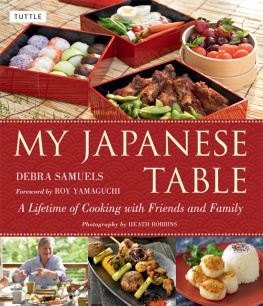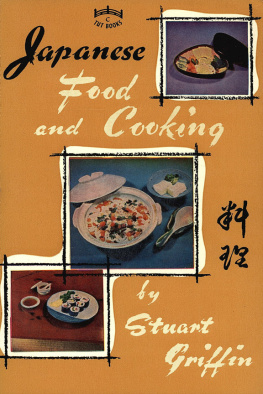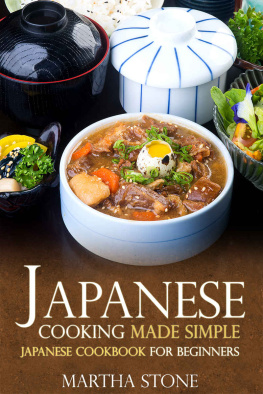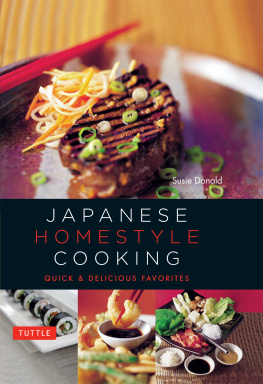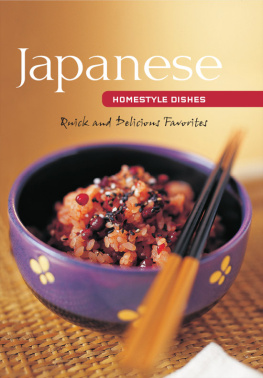A Lifetime of Cooking Japanese Food with Family and Friends
My taste buds and I came of age together in Japan. In the early 1970s, when I was twenty and just married, my husband, Dick and I arrived in Japan for a semester abroad. Although we had studied Japan and Japanese, we knew nothing of the cuisine. Just like love, there is a first time for everything, and so on our first visit to a Japanese home we were offered a traditional bath and sashimi (in that order)neither of which we had ever experienced and neither of which we could possibly refuse. Still wet from the bath, we were directed to a low table with a kaleidoscopic platter of gleaming raw fish. Nothing had prepared me for this; I was horrified by the very idea of raw fishbut there was no polite way out. Our smiling hosts watched eagerly as I took my awkward first bite and, sure enough, I could barely swallow the slippery repast. I like to believe that somehow I managed not to embarrass myself or them.
After further language study, our next stop was a home-stay in the port town of Tsukumi, in rural Kyushu. We lived at the home of a physician, Dr. Chikanori Oishi (Oishi Sensei) and his 15-year-old son Shingo (Shingos brother, Seichiro, and sister, Eriko were away at university). As is common among Japanese doctors, the doctors home was also a small hospital, with beds for patients. Ordinarily, the doctors wife would run the home, but Shingos mother had died the year before, so a small staff of nurses and a housekeeper looked after the patients, the doctor, his son, and now us. Each day we awoke to the smell of miso soup, steamed rice, and roasted fish. I hung around the kitchen and helped the staff prepare the lunches. The aromas in that home remain imprinted on my senses today and are strongest when I prepare the basic Classic Miso Soup you will find on page 81.
After graduation, my husband began his graduate studies, and his field research brought us back to Japan in the late 1970s with our then 5-month-old son, Brad. For 2 1/2 years we lived in a tall gray concrete apartment complex in a working class Tokyo neighborhood. Our apartment was sparetwo small tatami mat rooms with a kitchen/dining area. We slept on a futon, Japanese styleBrad in between uswhich I folded up and stored away every morning. Our small washing machine was outdoors on our tiny cement terrace, and my kitchen was a six-foot counter with a 2-burner stove top and a toaster oven. The fridge was dorm room size, so like all my neighbors, I shopped daily. Dick, who is 64 (193 cm) felt cramped, but I was thrilled. He began a lifetime of banging his head against low doorways and ceilings, while at 5 feet tall, everything was in arms reach for me. In downtown Tokyo my taste buds were educated by my kind neighbors and, after a while, more formally when I enrolled in classes to learn Japanese homestyle ( katei ) cooking.



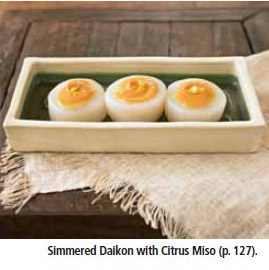



The famous Tsukiji fish market was just across the Sumida River, which ran next to our apartment building. Our neighbors there adopted us. No one spoke English and my Japanese was still tentative. I would not have survived but for the kindness of these strangers. I have never forgotten how they embraced our family, and I have spent the rest of my life trying to reciprocate by helping others who find themselves in similar situations. As I settled into the rhythms of Japanese life, I began looking forward to the sound of the tofu vendors horn on his bicycle, to the rhythmic call of the roasted sweet potato hawker in his rickety truck, and to the daily banter with the local shopkeepers. My love affair with Japanese food was well underway. Daily shopping made me appreciate serving the freshest food possible. Each new ingredient provided an opportunity for mini cooking lessons with my neighbors. They showed me how to put together a chicken hot pot ( mizutaki ) and lent me the clay pot ( donabe ) to do it. I learned how to rinse short grain rice until the freezing cold water ran clear or my reddened hands seized up.
Half way through our stay we moved from downtown Tokyo to the suburbs. Brad went to Japanese nursery school, I went to work, and Dick finished his dissertation. We returned to the States with a three-year-old and a baby on the way.
In the mid-1980s we returned to Japan when Dick began research for a new book. Now we had two boys in towBrad was 6 and Alex was 3. I marketed daily at the small shops in Hamadayama, a Tokyo suburb. My bicycle had a grocery basket in the front and a seat for Alex in the back. With him perched on his little throne, we would cruise up and down the high street, buying ingredients for dinner. Alex quickly became fluent in Japanese and soon knew that the locals found him different and cute ( kawaii ). He was quick enough to know that if he said oishii-s (that looks so yummy!) while staring directly at a mountain of just-fried chicken, the granny behind the counter would offer him a crispy piece. Then he would bow and say domo (thanks), and out would come another one! The kid had his routine perfected, and by the time we were on the way home he was full.



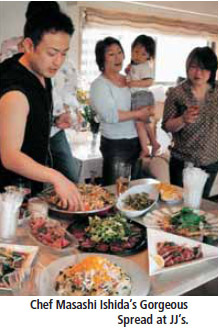
Brad was a first grader at the local elementary school, so I learned to prepare Japanese-style boxed lunch (bento) for him. These box lunches were culinary masterpiecesat least when in the ways the other moms prepared them. Brad made it clear that American-style peanut butter and jelly sandwiches in a brown paper bag just wouldnt do! Far from thinking these moms were mad to be spending an hour preparing cute lunches for their kids, I embraced the idea. I bought myself a Japanese book called 100 Obento Ideas and a little blue plastic bento box in the shape of a car for Brad. For the rest of the school year I made my way through that book, letting him pick his lunches by looking at the pictures. Maybe I was mad too, but he always finished his lunches.
This was also when I started taking Japanese cooking classes at the home of Michiko Odagiri, an elegant and well-known cooking teacher who, like Julia Child, taught cooking on Japans public television network, NHK. Her class was aimed at Japanese women, and I was the only foreigner in attendance. I could understand her oral instructions, but her recipes were written in Japanese, which I had not fully mastered. Fortunately, my fellow students read the recipes to me after each class, and I translated and transcribed them into my notebook. These recipes formed the base of my practical training, and many appear in some form in this cookbook with the kind permission of Odagiri Senseis daughter Shigeko.

